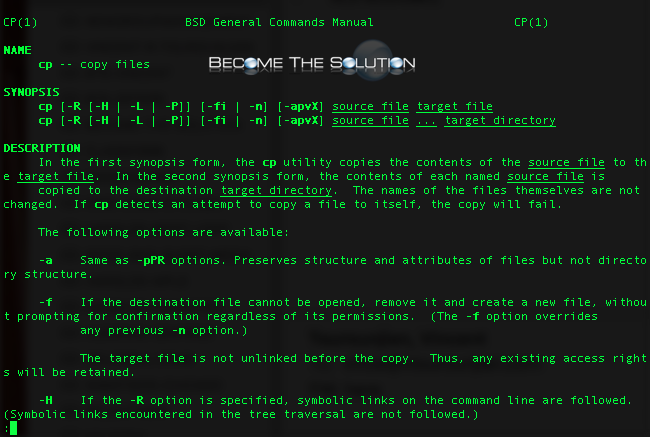
- #MAC TERMINAL COMMANDS PDF HOW TO#
- #MAC TERMINAL COMMANDS PDF INSTALL#
- #MAC TERMINAL COMMANDS PDF FULL#
- #MAC TERMINAL COMMANDS PDF SOFTWARE#
For example, you might have typed “cd.trash” instead of “cd. If you have the file name correct, there could be an issue with the commands used to create results.Ĭopying the commands from a website into Mac Terminal only works when the correct spacing and symbols get used. ⚠️ You won’t be able to recover lost files with Terminal if you have emptied the Trash, deleted files from the Trash with Delete Immediately, or used the Option + Shift + Command + Delete keystroke combination. If Time Machine was active before the data loss incident took place, then it’s very likely that your files are safely backed up on your Time Machine backup disk, and you can restore with a few clicks.Īpple offers complete instructions to help you restore your Mac from a Time Machine backup.
#MAC TERMINAL COMMANDS PDF SOFTWARE#
If the three data recovery methods described above has delivered the results you were hoping for, then there’s still some hope left because all Macs come with built-in backup software called Time Machine. Method 4: Use a recent Time Machine backup
#MAC TERMINAL COMMANDS PDF HOW TO#
(Optional) Perform a Deeper Search to find deleted partitions that Quick Search wasn’t able to recover.įor detailed instructions on how to recover lost partitions and repair damaged boot sectors using TestDisk, read the official documentation.Perform a Quick Search for the deleted partition.Press Enter to analyze the current partition structure and search for lost partitions.Select the storage device with the deleted partition.Select Create to create a new log file.Launch TestDisk by typing “ testdisk” in Terminal.
#MAC TERMINAL COMMANDS PDF INSTALL#
It then takes just one more command it install TestDisk itself: brew install testdiskĮven though TestDisk is a command-line software application, it offers a straightforward step-by-step data recovery process that can be summarized in just a few steps: To do that, just enter the following command in Terminal: /bin/bash -c "$(curl -fsSL )" What you need is specialized partition recovery and repair software like TestDisk, which runs directly in the Terminal app.īefore you can install TestDisk, you first need to install Homebrew, a free and open-source software package management system for macOS.

When dealing with damaged or lost partitions, simple Terminal commands are not enough to save the day. Method 3: Restore lost partitions with TestDisk Method 2: Recover deleted files with data recovery software. If it doesn’t show up in the prompt window, use the search bar with its name to locate it. You should see the deleted file in Finder.
#MAC TERMINAL COMMANDS PDF FULL#
You must use the full file name in the command line for this technique to work.

These four techniques can help you have a successful experience. When you need to recover deleted files quickly, Mac Terminal is one of the best options to choose. How to Recover Deleted Files Using Mac Terminal Even most of the commands are the same, although you’ll see more periods than frontslahes or backslashes in each one. If you’re familiar with MSDOS or UNIX operating systems, the emulator functions similarly. It can help you open applications, open files using a text editor or specific app, and recover accidentally deleted files. 💡 Mac Terminal is useful for several commands.


 0 kommentar(er)
0 kommentar(er)
